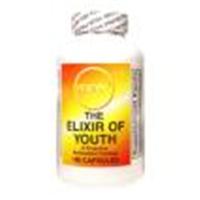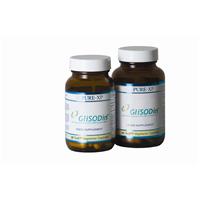Tag Archives: ageing
Can human lifespan be extended by 45%?
Madrid: The human lifespan could be extended by up to 45 per cent if tests on mice can be replicated in people.
As well as a longer life the dicovery could also mean one where people suffer less serious diseases.
Scientists have made a genetic breakthrough which they claim could extend human life and and left them free from tumours.
The researchers, at the Spanish National Cancer Research Centre (CNIO), carried out an experiment in which they inserted three genes, known for their longevity benefits into the stem cells of mice.
The extra copies of the genes – telomerase, P53 and p16, improves the body’s function and immunity to disease, including cell mutation which occurs more frequently in ageing adults.
The technique is a new breakthrough because the scientists managed to extra copies of both p53 and p16 into the mice, which has never been achieved before. It is also the first time that scientists have been able to extend the life of mice in this way while protecting them against cancer.
The modified mice were allowed to breed to strengthen their new DNA pattern, which created a group of supermice with longer lifespans and in-built cancer protection.
It is thought the researchers managed to create mice which lived to around four-and-a-half years. Normally, they live for an average of three years – the equivlent of a human living to 125.
Chief researcher Maria Blasco, one of Spains leading scientists, said that the elixir of eternal youth is now a Utopian dream.
“The discovery opens the door to the possibility that humans could live 125 years and without cancer.
Women start to worry about ageing from 28
London: Women begin worrying about looking old from the age of 28, according to a new survey by wrinkle cream maker Olay Regenerist.
The teenage years when girls usually try to look older, are followed by a few years in their 20s when they are happy about their looks.
But by he time they hit 28 they want to look younger as the first wrinkles start to appear.
Worries over broken veins and age spots also emerged as starting to trouble women around this time.
The survey asked 4000 women of all ages to pinpoint the stage when they started – or thought they would start – worrying about the ageing process.
Sarah Clarke, from Olay Regenerist, who carried out the survey, said: “This study goes to show that women are seriously worried about their looks and want to make sure they stay looking young from an early age.
“While 28 might not seem that old, for many women, just the fact that the dreaded 30s are approaching can be enough to get them worrying about their skin showing signs of ageing.”
Women listed wrinkles as their biggest fear, followed by losing their hair, going grey and getting crow’s feet.
Other fears included getting broken or thread veins and losing their hair.
It also emerged 84 per cent of women are so concerned about showing the signs of ageing they would spend as much money as necessary to keep their skin looking young.
But that does not come cheap, with the average woman spending £483 a year – or £40 a month – on anti-ageing creams, beauty treatments and gym membership.
A total of £216 a year is spent on anti-ageing creams and beauty treatments such as facials and wraps.
Exercising and going to the gym costs another £113 while colouring hair accounts for a further £43.32.
Even vitamin supplements and mineral water account for £110 spent each year.
However, the poll also found many women will struggle to keep up with the massive cost.
The average 28-year-old has just £214 a month – around £50 a week – to live on after paying the mortgage or rent and household bills.
Cancer
The risk of developing most types of cancer increases with age.
In women, the rate of cervical cancer decreases, and endometrial cancer increases so it’s important for women to get regular exams.
The risk of prostate cancer increases with age, and black men have a higher rate than white men. Screening should start in your 40s, and at the very least should involve a digital rectal examination.
Lung cancer accounts for more deaths than breast cancer, prostate cancer, and colon cancer combined. So stop smoking.
The Centenarian
Interesting information and articles on living to be 100: www.thecentenarian.co.uk
Family & friends key to longevity – Evercare survey
New York: Key to living a long and happy life are close relationships with family and friends, according to the third annual Evercare 100@100 survey.
The US poll of 100 centenarians also reveals, that contrary to conventional stereotypes, some of the oldest Americans are using the latest technologies to keep close to friends and loved ones – talking on cell phones, sending emails, “Googling” lost acquaintances, surfing Wikipedia and even online dating.
“We serve Centenarians and other older Americans every day who inspire and educate us about the keys to longevity – they are teaching us what it means to live longer, healthier, happier lives,” said Dr. John Mach, a geriatrician and chairman of Evercare, a part of UnitedHealth Group.
“We conduct the Evercare 100@100 Survey to understand the secrets to successful aging and to put those findings into action to better serve our members – helping them maintain their independence and achieve better health outcomes.”
Created to be a cultural snapshot of 100 Americans turning 100 or older in 2008, this year’s Evercare 100@100 Survey also polled 900 of those in other generations to compare and contrast the generational findings on topics of maintaining relationships and staying independent. The other generations surveyed included G.I. (ages 84-98), Silent (ages 63-83), Baby Boomers (ages 44-62), Gen X (ages 30-43) and Millennials (ages 20-29). According to the 2007 U.S. Census Bureau data, there are more than 84,000 Centenarians in the United States, and that number is projected to increase seven-fold, to 580,000, by 2040.
Among the key findings of the 2008 Evercare 100@100 Survey:
– An apple a day may keep the doctor away: . . .but these Centenarians say staying close to friends and family is most important to healthy aging (90 percent). Keeping the mind active (90 percent) and laughing and having a sense of humor (88 percent) also ranked high for living longer.
– Surveyed Centenarians are no technophobes: 19 percent say they use cell phones to keep in touch with friends and family. Other technology used to stay in touch includes: e-mail (7 percent), sending or receiving digital photos by email (4 percent), and text messaging (1 percent).
– Love 2.0: As many Centenarians as Baby Boomers (3 percent) say they have dated someone they met on an online dating site. Twelve percent of Centenarians surveyed say they have used the Internet and some have “Googled” someone they have lost contact with (2 percent) or have visited someone’s personal Web site (2 percent).
– Centenarians have seen a slew of historical presidential match-ups: FDR defeat Hoover, Kennedy defeat Nixon, Reagan defeat Carter and Clinton defeat Bush I. But majorities (54 percent) of surveyed 100-year-olds say that the 2008 election is more important than previous presidential elections.
– Heading to the polls: In keeping with typical voting habits in which older voters regularly turn out at the polls, 70 percent of Centenarians surveyed say they are very likely to vote in this year’s presidential election, as compared to only 60 percent of Millennials surveyed.
— Little white lies can spell big trouble: Centenarians surveyed say that being honest with each other, even if the truth sometimes hurts, is the most important factor in a lasting relationship (91 percent). They also say it is very important to have fun and laugh together (88 percent) and to respect each other’s independence (83 percent).
Evercareis a national care coordination program for people who have long-term or advanced illness, are older or have disabilities.
Photo ageing
The ageing of the skin caused by the environment, particularly the sun and pollution.
70-year-olds can’t get enough sex!

Gothenburg: Older people are having more sex than ever, according to a new survey from Sweden.
At a time when the health of many older people is in decline, it seems that an active sex life is on the rise.
Not only are they more likely to have sex at least once a week, they are also much more likely to report high rates of satisfaction, says research carried out among the 70+ age group of the Swedish city of Gothenburg.
The research was carried out in four different time periods – 1971-72, 1976-77, 1992-93 and 2000-01 – for the study which is published in the British Medical Journal.
Men in their eighth decade are less likely to have erectile dysfunction than men the same age 30 years ago, while women aged 70 are much more likely to report having orgasms.
The responses from the four groups, totalling more than 1500 people, showed that over the 30-year period, the proportion of married 70-year-old men reporting sexual intercourse in the past year increased from 52 to 68 per cent, while for married women, the figure increased from 38 to 56 per cent.
Among unmarried men and women, the proportion rose from 30 to 54 per cent for men, and from 0.8 to 12 per cent among women.
Those reporting sex at least weekly rose from 10 to 31 per cent among both married and unmarried men, and from 9 to 26per cent among all women.
The proportion of men reporting high satisfaction with their sex lives rose from 58 per cent in 1976-77 to 71 per cent in 2000-01. Among women, the satisfaction rating rose from 41 to 62 per cent.
Men were much less likely to report being impotent (down from 18 to 8 per cent), while women were more likely to say they “always or usually” had an orgasm (up from 59 to 83 per cent).
Is 100 the new 80?

Centenarians have become the fastest-growing demographic in Australia, creating a new boom generation of sprightly golden oldies.
At last count, 3154 Australians are currently aged 100 or older, with one-third of them from New South Wales.
But the latest forecasts estimate this will spiral to 12,000 by 2020 and 50,000 by 2050, according to new research published in the Medical Journal of Australia.
This will also mean more “super-centenarians” aged 110 or older, as well as more “semi-super-centenarians”, from 105 to 109.
Shattering the stereotype of immobile elderly people, more than half of the centenarians live in their own homes rather than in care homes.
Women are far more likely to reach 100, accounting for 75 per cent of the total, but male centenarians tend to be healthier, more independent and are far less likely to suffer from Alzehimer’s or dementia.
The study, by Professor Robyn Richmond, a NSW University public health expert, found Australia has one of the highest proportion of centenarians.
Japan, with more than 30,000 centenarians, has traditionally been associated with longevity but, according to Prof Richmond’s study, only Norway, Sardinia (Italy) and the US have a similar rate of over-100s to Australia.
Professor Richmond attributed the rising longevity to improved survival from diseases and improving health and lifestyles for the elderly.
“Many Australians are unaware of how many centenarians there are and how little we know about them,” she said. “It is amazing that these extremely enduring old people, whose lives carry a wealth of history, are living among us – and yet we appear to have largely ignored their effect on our society.”
She called for targeted government policies to address the social, medical and financial impact of living to 100 years and beyond.
“The consequences of the demographic transition need investigation by health policy-makers and economists,” she said.
“We need a better understanding of changes in disability prevalence, in order to make estimates of the likely short- and long-term cost implications.”
Declining fertility rates, with low population growth in younger age groups, also helped make centenarians the fastest-growing group.
Over 25 years, centenarian numbers have grown by 8.5 per cent a year.
In comparison, the number of children has grown by a meagre 0.3 per cent. Even the elderly population, aged between 80 and 99, has risen by only 4.9 per cent over the same period, the report showed.
US scientists on track of elixir of youth

Los Angeles: Scientists in California have used biochemical signals to rejuvenate elderly bodily tissues in mice.
Research by Dr Morgan Carlson, published in the journal Nature, was overseen by Irina Conboy, associate professor at UC Berkeley.
Professor Conboy said: “We don’t realize it, but as we grow our bodies are constantly being remodeled. We are constantly falling apart, but we don’t notice it much when we’re young because we’re always being restored. As we age, our stem cells are prevented, through chemical signals, from doing their jobs.”
“When old tissue is placed in an environment of young blood, the stem cells behave as if they are young again,” according to the Berkeley press release.
Essentially, the Californian researchers were able to persuade muscle tissues in some mice that they were young again.
“Interestingly, activated Notch competes with activated pSmad3 for binding to the regulatory regions of the same CDK inhibitors in the stem cell,” said Professor Conboy.
“We found that Notch is capable of physically kicking off pSmad3 from the promoters for the CDK inhibitors within the stem cell’s nucleus, which” – as any fool would realise – “tells us that a precise manipulation of the balance of these pathways would allow the ability to control stem cell responses.”
Altering the Notch and pSmad3 levels using “an established method of RNA interference” allowed Conboy and Carlson to manipulate TGF-beta proteins and fire up the dormant stem cells of a group of elderly mice.
“When we are young, there is an optimal balance between Notch and TGF-beta,” according to Conboy. “We need to find out what the levels of these chemicals are in the young so we can calibrate the system when we’re older. If we can do that, we could rejuvenate tissue repair for a very long time.”
Read more at Pathways to the Fountain of Youth
Reverse Ageing now – win a sample of Solgar DNA repair


London: Welllness experts Solgar are offering 20 fullsize samples of their latest anti-ageing product AC-11 to readers of ELIXIR.
Solgar AC-11 is a proprietary extract from the rainforest botanical plant, Uncaria tomentosa. It is perhaps the single most proactive means of promoting the body’s own natural DNA care mechanisms and in clinical studies has been shown to increase the body’s ability to repair DNA.
A two month’s supply of AC-11 costs £28.99 (35.90) but you can win a free sample. Email us at readeroffer@elixirnews.com with your name and address, putting SOLGAR in the email header and you will be entered into a draw to win a free sample. This offer closes on 31 May 2008. Please note that no cash equivalent is being offered and the Editor’s decision is final.
More about Solgar AC-11
Uncaria tomentosa, a vine that grows among the teeming, exotic plethora of botanical species found in the Amazon. More commonly known to the locals as “Uña de Gato” or “Cat’s Claw,” its outer bark contains a powerful, natural activator of DNA repair, critical to cellular health and vital to longevity.
The benefits of Uncaria tomentosa almost make it sound like a cure all. It helps keep the immune system working properly. It helps prevent cellular damage, and damage to DNA. While much of the action of Uncaria tomentosa takes place deep inside the cells of the body, it also works to positively affect the outward, visible signs of aging such as wrinkles and sun spots – conditions linked to the ageing process in which the body produces imperfect DNA.
What is the connection between DNA and ageing?
Put simply, DNA is our genetic code or the “blueprint” that we inherit from our parents. When we are born, our genetic code, or DNA, is virtually pristine. Every cell in our body is formed based on our DNA, and each cell becomes a holder of our entire genetic blueprint. As we grow and age, our bodies and our DNA are constantly bombarded by things in the environment that can damage our DNA. A good example is the sun. Prolonged exposure to the sun ultimately damages our skin cells (and their DNA) and results in wrinkles or worse. In fact, any damage to our DNA ultimately becomes the cause of the negative effects we associate with aging. This damage can also manifest itself as the cause of various ailments we encounter throughout our lifetimes.
If the body can’t produce clean copies of our DNA, our health and longevity will be directly affected. The key to optimal health, therefore, is to keep our DNA clean and healthy and producing “clean” copies. We do this by helping our bodies neutralize excess free radicals, and at the same time, strengthen and nourish our cells and their DNA.
Solgars AC-11 can best be thought of as the catalyst that sets DNA repair in motion. It then continues its favorable age management action by helping to protect your DNA from future damage.
What will Solgar AC-11 do for me?
The major attribute of AC-11 relates to its effect on DNA repair, so it will be useful in many of the same situations as antioxidants. It is also anti-inflammatory and immune enhancing, so possible uses include:
Anti-ageing/rejuvenation
Supports cellular skin health, and regeneration
Recovery from injury and enhancing healing
Immune system support (e.g. frequent colds/infections)
Inflammatory conditions
Auto-immune conditions, which often involve the immune system and have an inflammatory element, such as arthritis
Family history of age related disease
Find out more about Solgar’s AC-11 – receive your sample & exclusive book – REVERSE AGING, by internationally acclaimed author and consultant Marcia Zimmerman C.N
Solgar AC-11 vegetarian capsules RRP: £28.69 (35.90) for two months supply is available from independent health foods stores and selected pharmacies nationwide. You can also buy online at www.solgar-vitamins.co.uk
Red wine retards ageing, concludes new research

Red wine which contains an antioxidant called resveratrol can remove fat from the diet, new research into its affect on ageing has revealed.
This confirms the speculation over why the French can eat a fatty diet but still remain healthy.
Earlier studies have already shown that resveratrol, also found in grapes, pomegranates and other foods.
In the journal PLoS ONE, the new research explains that even low doses of the substance in the diet of older mice may protect the heart. It is thought that resveratrol behaves in the same way as caloric restriction, a diet containing a full range of nutrients but with half the calories of a typical diet, which extends lifespan and cuts the risk of obesity, diabetes and cancer.
The study was carried out by the University of Wisconsin-Madison compared the gene use of animals on a restricted diet with those fed small doses of resveratrol. The authors concluded that a glass of red wine or supplements containing even small amounts of the substance could cease the rate of heart ageing.
Scientists discover fat genes


London: A gene sequence linked to an expanding waist line, weight gain and a tendency to develop type 2 diabetes has been discovered as part of a study published today in the journal Nature Genetics.
The study also shows that the gene sequence is significantly more common in those with Indian Asian than European ancestry. The research, which was funded by the British Heart Foundation, could lead to better ways of treating obesity.
Scientists from Imperial College London and other international institutions have discovered that the sequence is associated with a 2cm expansion in waist circumference, a 2kg gain in weight, and a tendency to become resistant to insulin, which can lead to type 2 diabetes. The sequence is found in 50% of the UK population.
“Until now, we have understood remarkably little about the genetic component of common problems linked with obesity, such as cardiovascular disease and diabetes,” said Professor Jaspal Kooner, the paper’s senior author from the National Heart and Lung Institute at Imperial College London. “Finding such a close association between a genetic sequence and significant physical effects is very important, especially when the sequence is found in half the population.”
The study shows that the sequence is a third more common in those with Indian Asian than in those with European ancestry. This could provide a possible genetic explanation for the particularly high levels of obesity and insulin resistance in Indian Asians, who make up 25% of the world’s population, but who are expected to account for 40% of global cardiovascular disease by 2020.
The new gene sequence sits close to a gene called MC4R, which regulates energy levels in the body by influencing how much we eat and how much energy we expend or conserve. The researchers believe the sequence is involved in controlling the MC4R gene, which has also been implicated in rare forms of extreme childhood obesity.
Previous research on finding the genetic causes of obesity has identified other energy-conserving genes. Combining knowledge about the effects of all these genes could pave the way for transforming how obesity is managed.
“A better understanding of the genes behind problems such as diabetes and cardiovascular disease means that we will be in a good position to identify people whose genetic inheritance makes them most susceptible,”
added Professor Kooner. “We can’t change their genetic inheritance. But we can focus on preventative measures, including life-style factors such as diet and exercise, and identifying new drug targets to help reduce the burden of disease.”
The research was carried out as part of the London Life Sciences Population (LOLIPOP) study of environmental and genetic causes of cardiovascular disease, diabetes and obesity in approximately 30,000 UK citizens of Indian Asian and European ancestry. The scientists looked at the association between unique genetic markers, called single nuclear polymorphisms, and physical traits linked with obesity, such as waist circumference and insulin resistance.
“The studies we carry out through LOLIPOP are providing unique and important data,” explained lead author Dr John Chambers from the Department of Epidemiology and Public Health at Imperial College London.
“The number of people involved, the comparisons between two ancestries, and the detail with which we can explore genetic and environmental effects are helping us identify crucial linkages.”
This research was carried out by scientists at Imperial College London, University of Michigan, USA, and the Pasteur Institute, France.
Background:
1. “Common genetic variation near MC4R is associated with waist
circumference and insulin resistance” Nature Genetics, Sunday 4 May 2008, doi 10.1038/ng.156
Download an embargoed copy of the paper here:
FileExchange
(available until 16 May)
2. Imperial College London – rated the world’s fifth best
university in the 2007 Times Higher Education Supplement University Rankings – is a science-based institution with a reputation for excellence in teaching and research that attracts 12,000 students and 6,000 staff of the highest international quality. Innovative research at the College explores the interface between science, medicine, engineering and business, delivering practical solutions that improve quality of life and the environment – underpinned by a dynamic enterprise culture. Website: www.imperial.ac.uk
3. The British Heart Foundation (BHF) is the UK’s heart
charity, dedicated to saving lives through pioneering research, patient care, campaigning for change and by providing vital information. But we urgently need help. We rely on donations of time and money to continue our life-saving work. Because together we can beat heart disease. For more information visit bhf.org.uk
UK MPs highlight abuse of elderly with dementia

London: An influential group of MPs is calling on the Government to stop the dangerous over-prescribing of antipsychotic drugs to people with dementia. Up to 105,000 people with dementia are given the drugs inappropriately, according to expert predictions in the new All-Party Parliamentary Group (APPG) on Dementia report, A Last Resort, published today.
Antipsychotics continue to be a first resort for dealing with challenging behaviour in people with dementia, such as aggression or agitation, despite causing devastating side effects, doubling risk of death and costing the UK over £60 million a year.
A Last Resort identifies 5 vital steps to reduce antipsychotic use and reveals there is currently no audit or regulation of the issue. It urges the Government to use its new National Dementia Strategy to address the problem and the National Institute for Health and Clinical Excellence to conduct a thorough review.
Jeremy Wright, Chairman of the APPG on Dementia, says:
A Last Resort shines a light on one of the darkest areas of dementia care. Antipsychotics can double risk of death and triple risk of stroke in people with dementia, heavily sedate them and accelerate cognitive decline.
The Government must end this needless abuse and make the 5 point plan a key element of the National Dementia Strategy. Best practice guidelines are not enough – safeguards must be put in place to ensure antipsychotics are always a last resort. We need to include families in decisions, give people with dementia regular reviews and equip care staff with specialist training.
Neil Hunt, Chief Executive of the Alzheimers Society, says
It is absolutely disgraceful that widespread the abuse of people with dementia has been allowed to continue despite safety warnings on antipsychotics. Urgent action is needed.
Safe, effective alternatives to antipsychotics are available. New Alzheimers Society research shows specialist dementia training vastly increases quality of life and could save the UK £35 million a year if it was mandatory.
Over 70% of people with dementia experience challenging behavior at some point during illness. More often than not this is an expression of unmet need, not a symptom of dementia, and there is no excuse for reaching for the medicine cabinet.
Lynn Ramsey, whose husband David was prescribed antipsychotics, says
My husband David was given antipsychotics without my knowledge. He was unable to make the decision himself because of his dementia. At first it was extremely painful for him and the drugs impacted on his ability to eat and dress. Davids chin became slumped onto his chest and he could only look at the floor for the rest of his life. He died aged 63. These drugs have a major adverse affect on peoples lives, both patients and families.
The 5-point plan recommended in the report:
1. Specialist dementia training for all care staff
2. Families must be involved in all decisions around antipsychotics.
3. More pro-active support for care home staff from GPs, community psychiatric nurses and psychiatrists.
4. Compulsory medical reviews of people with dementia every 12 weeks
5. A cost effectiveness review by The National Institute of Health and Clinical Excellence and a national audit by the Care Quality Commission
References
Up to 150,000 people with dementia in the UK in care facilities are prescribed antipsychotics according to best estimates. (Prof C Ballard, APPG inquiry oral evidence). Experts in Old Age Psychiatry predict 70% of prescriptions are inappropriate, therefore up to 105,000 people with dementia are inappropriately prescribed antipsychotic drugs (A Last Resort).
Alzheimers Society funded research estimates antipsychotics cost the UK £60, 792, 263 per annum and specialist dementia training would save the UK £35 million a year if it was mandatory.
Antipsychotics can treble risk of stroke in people with dementia (Committee on Standards for Medicine, 2004), and double a persons risk of mortality (FDA 2005).
Alzheimers Society research published in the BMJ found that specialist dementia training reduces disruptive behaviour and the use of antipsychotics by 50%.
More information
A Last Resort collates evidence from stakeholders, experts and people with personal experience, received as part of an All Party Parliamentary Group on Dementia investigation, including the Royal College of Nursing, Royal College of Psychiatrists, Alzheimers Society and the Commission for Social Care Inspection.
244,185 people (two thirds of care home residents) have a form of dementia.
If we live to over 65, 1 in 3 of us will end ourlives with a form of dementia
700,000 people in the UK have a form of dementia. In less than 20 years nearly a million people will be living with dementia and by 2051 there will be 1.7 million
For support or advice contact Alzheimers Society Dementia Helpline number is 0845 300 0336 or visit
Aerobic fitness delays ageing by a decade

London: Maintaining aerobic fitness in middle age and beyond could delay the ageing pby more than a decade and assist independent living, says a new review of research on aerobic fitness and dependency in old age.
Twenty years ago, Dr. R. J. Shephard of the University of Toronto in Ontario and his colleagues proposed that adequate aerobic capacity was a key factor in helping very old people to maintain a high quality of life and live independently. In a review published in the British Journal of Sports Medicine, Shephard analyzes the latest data on the issue.
Regular aerobic exercise improves the body’s ability to take in oxygen and use it, but a person’s maximal aerobic power falls steady as people age.
According to Shephard, studies of aerobic training response in older people have shown that workouts, especially more intense physical activity maintained for a longer duration, can improve aerobic power. In fact, seven studies of this type of exercise found people’s aerobic power increased nearly 25 percent — equivalent to reversing 12 years’ worth of aging-related loss of fitness.
Based on his review, published in the British Journal of Sports Medicine, Shephard concludes that elderly people who engage in progressive aerobic training can maintain their independence longer, in effect by turning back the clock on the loss of aerobic fitness that occurs with aging.
Other positive spin-offs of aerobic fitness include reduced risks of serious illness, faster recovery after injury or illness, and reduced risks of falls due to maintenance of muscle power, balance and coordination.
“There remains a need to clarify the importance of deteriorations in fitness relative to other potential causes of dependency but, from the practical viewpoint, regular aerobic activity can address many of the issues of both functional loss and chronic disease,” he writes.
World’s oldest person set to turn 115

Chicago: American Edna Parker, the world’s oldest known person, will celebrate her 115th birthday tomorrow (Sunday).
Her achievement was recognised by Guinness World Records last August after the death of a Japanese woman four months her senior.
There are only 75 people alive – 64 women and 11 men – that are 110 or older, according to the Gerontology Research Group, a California-based organisation that verifies reports of extreme ages.
Mrs Parker, pictured right, who was born April 20, 1893, has been a widow since her husband Earl died of a heart attack in 1938.
She has also outlived her two sons – Clifford and Earl Jr – but is far from lonely with five grandchildren, 13 great-grandchildren and 13 great-great grandchildren to keep her company.
Edna Parker
“We don’t know why she’s lived so long,” said Don Parker, her 59-year-old grandson.
“But she’s never been a worrier and she’s always been a thin person, so maybe that has something to do with it.”
Scientists who study longevity hope that Mrs Parker can help unlock the secrets to long life.
Edna Parker
Two years ago, researchers from the New England Centenarian Study at Boston University took a blood sample from Mrs Parker for the group’s DNA database of supercentenarians.
Her DNA is now preserved with samples of about 100 other people who reached the 110-year milestone, and whose genes are being analysed, said Dr Tom Perls, an aging specialist who directs the project.
“They’re really our best bet for finding the elusive Holy Grail of our field – which are these longevity-enabling genes,” he said.
On Friday, a birthday party for Mrs Parker was held at her nursing home in Shelbyville, Indiana.
A smiling Mrs Parker looked on as relatives and guests released 115 balloons into the sky to celebrate her milestone.
Aerobic fitness can delay ageing by more than a decade

Toronto: Maintaining aerobic fitness could delay biological ageing by up to 12 years, concludes an analysis published in the British Journal of Sports Medicine.
Aerobic exercise, such as jogging, improves the bodys oxygen consumption and its use in generating energy (metabolism).
But maximal aerobic power starts to fall steadily from middle age, decreasing by around 5 ml/[kg.min] every decade.
When it falls below aound18 ml in men and 15 ml in women, it becomes difficult to do very much at all without severe fatigue.
In a typical sedentary man, the maximal aerobic power will have fallen to around 25 mil/[kg.min] by the age of 60, almost half of what it was at the age of 20.
But the evidence shows that regular aerobic exercise can slow or reverse the inexorable decline, even in later life.
Research shows that relatively high intensity aerobic exercise over a relatively long period boosted maximal aerobic power by 25%, equivalent to a gain of 6 ml/ [kg.min], or 10 to 12 biological years.
There seems good evidence that the conservation of maximal oxygen intake increases the likelihood that the healthy elderly person will retain functional independence, says the author, Dr Roy Shephard of the University of Toronto.
The other positive spin-offs of aerobic exercise are reduced risks of serious disease, faster recovery after injury or illness, and reduced risks of falls because of the maintenance of muscle power, balance, and coordination.
Fight ageing with FREE new power antioxidant for ELIXIR readers
Fight ageing naturally with PURE-XPs groundbreaking product – GliSODin – a free one month’s supply, worth £34.99 for 20 Elixir readers.
Stop the clock with PURE-XP GliSODin®, the first all natural, daily supplement proven to fight the signs of ageing, support the immune system and boost energy levels – launched this month by health and wellbeing experts, PURE-XP.
Recently launched in the UK, PURE-XP GliSODin® is already making a name for itself as the best anti-ageing product on the market. This January the Complementary Medical Association (CMA) announced that PURE-XP has scooped the award for The Best Anti-Ageing Supplement from one of the UKs premier health stores, Victoria Health.
Fighting off fierce competition, newcomer PURE-XP GliSODin® was crowned winner due to its strength of performance compared to other anti-ageing supplements. PURE-XP GliSODin® is currently the only product in the world be recommended by the CMA and works by stimulating the bodys own production of antioxidants to protect cells against the ageing process. Combining the benefits of a natural, vegetarian oral supplement, the TrufilTM vegetarian capsules are not only proven to help combat the signs of ageing but also boost energy levels and support the immune system, whilst aiding the bodies own cell renewal process.
Research shows that PURE-XP GliSODin® s active ingredient, superoxide dismutase, protects against oxidative stress as well as protecting the skin from UV stress [Free Radical Research]. Whereas other, weaker dietary antioxidants only attempt to compensate for any lack thereof, PURE-XP GliSODin® enables the consumer to make use of the unparalleled strength of their own antioxidants by helping maintain this internal defence system. Furthermore PURE-XP GliSODin® has an anti-inflammatory affect as well as neutralising the free radicals that lead to the signs of premature ageing and cell breakdown.
If you would like to receive one of the free samples please email us at readeroffer@elixirnews.com with your name and address, please put GliSODin in the email header. Your name will be put into a draw. This offer closes on 30 April 2008. No cash equivalent is being offered and the Editor’s decision is final.
Amar Malik, founder and CEO of PURE-XP, says, We are delighted to win this award so soon after launching PURE-XP GliSODin® in the UK. Winning the award has already had an impact upon sales, meaning weve witnessed a sharp increase in the number of units sold, and we anticipate that this success is set to continue. Its fantastic that the brand is being championed in such a way and getting such positive recognition.
GliSODin® by PURE-XP is available via www.myhealthcentre.com and in noted health stores nationwide. Available in 30 Trufil vegetarian capsules for £24.99 and 60 Trufil vegetarian capsules formats for £34.99, PURE-XP GliSODin® is taken daily.
PURE-XP GliSODin® the daily defence to ageing
Czech longevity increases

Life expectancy for Czechs is 2.4 months longer than in 2006, being 73.7 years for men and 79.9 years for women, according to the data of the Czech Statistical Office (CSU).
Life expectancy is now 5.6 years and 4.5 years longer for men and women, respectively, than in November 1989.
Men and women who now celebrate their 60th birthday can, on average, live up to the age of 78 years and 82 years, respectively.
People live markedly longer than a century ago. In 1920, life expectancy was 47.1 and 49.6 for then male and female inhabitants of then Czechoslovakia.
International institutions call on individual countries to adjust their pension and health systems to longer life expectancy and ageing.
The Czech government has been preparing a pension reform and within its first stage it plans to increase retirement age to 65.
Older Americans wealth and age grows, says new US report

Chicago: Older Americans are richer than ever before and are expected to live far longer than prior generations, a new US government report reveals.
They said the average net worth of older Americans, aged 65 or older, has increased almost 80 percent over the past 20 years.
And those who reach the age of 65 are now expected to live an average of 19 more years, or seven years longer than people who had reached age 65 in the year 1900.
The findings are part a report released on Thursday called Older Americans 2008: Key Indicators of Well-Being, which features data from 15 federal agencies on trends in population, economics and health issues.
“It gives you a status report of the older population,” said Richard Suzman of the National Institute on Aging, a part of the National Institutes of Health.
“We’ve seen significant improvements in poverty. The percent of those with low income has gone down, education has increased, life expectancy has increased,” Suzman said.
“But there are some notes of concern. Obesity has gone up quite significantly. And there are some large disparities. The life expectancy gap between whites and blacks has narrowed but is still large. There is a big wealth gap between whites and blacks,” he said in a telephone interview.
The report forecasts that by 2030, the number of Americans over the age of 65 will nearly double to 71.5 million, or 20 percent of the U.S. population, up from 12 percent, or 37 million people, in 2006.
It found that older adults in the United States are far better educated than prior generations. In 2007, 76 percent of those over 65 had high school diplomas, and at least 19 percent had a bachelor’s degree, up from 24 percent with high school diplomas in 1965 and just 5 percent with bachelor’s degrees.
But much of those gains in education were enjoyed by non-Hispanic whites over the age of 65. Eighty-one percent of non-Hispanic whites age 65 and older had finished high school in 2007, compared with 72 percent of Asians, 58 percent of blacks and only 42 percent of older Hispanics.
And while the proportion of people with incomes below the poverty line fell to 9 percent in 2006, down from 15 percent in 1974, median net worth for households headed by white people aged 65 and older in 2005 was six times that of households headed by blacks.
Not surprisingly, older Americans, like many other groups, are getting fatter, the researchers said. In the 2005-2006 study period, 37 percent of women aged 65 to 74 were obese, and 24 percent of women age 75 and over were obese. This is up from the 1988-1994 study period, when 27 percent of women age 65 to 74 and 19 percent of women age 75 and over were obese.
Despite many studies touting the benefits of exercise, the report found no significant change in the percentage of older people engaged in physical activity between 1997 and 2006.
While the report noted that Americans are living longer than ever before, life expectancy in the United States still lags many other industrialized countries, including Canada, France, Sweden and Japan.
For example, women in Japan who reached the age of 65 in 2003 could expect to live 3.2 years longer than women in the United States. Men in Japan who reached age 65 lived 1.2 years longer than men in the United States.
The full report can be viewed online at www.AgingStats.gov
Longevity genes hold key to ageing

Washington: A new discovery holds out the prospect of keeping old age at bay by targeting “longevity” genes.
Scientists have identified 25 genes that regulate lifespan in two organisms separated by 1.5 billion years of evolution.
They believe at least 15 are likely to have similar versions in humans. Affecting their activity could provide a way to slow down the ageing process and treat age-related conditions.
Dr Brian Kennedy, one of the researchers from the University of Washington in Seattle, US, said: “Now that we know what many of these genes actually are, we have potential targets to go after in humans.
“We hope that in the future we could affect those targets and improve not just lifespan, but also the ‘health span’ or the period of a person’s life when they can be healthy and not suffer from age-related illnesses.”
The two organisms studied by the scientists were yeast and the tiny roundworm Caenorhabditis elegans.
Both are commonly used laboratory tools. The researchers say finding genes that are conserved between them is important because they are so far apart on the evolutionary scale. Yeast and C. elegans are even more widely separated than C. elegans and humans.
Similar types of genes are known to exist in humans. Taken together, the evidence suggests that longevity genes are likely to influence human lifespan as well.
Several of the genes shown to be involved in ageing are also linked to a key nutrient pathway called the Target of Rapamycin, or TOR.
Calorie intake and nutrient response are believed to affect lifespan through TOR activity. Previous studies have shown that drastically restricting the diets of animals ranging from worms to monkeys can prolong lifespan and prevent age-related diseases.
Longevity affect of selenium limited

New York: The health protection of the mineral selenium are associated only with moderate levels of the supplement, a new report has found.
While moderate levels of the mineral are associated with longevity, once selenium levels climb past a certain mark, the odds of dying from any cause, or from cancer specifically, begin to tip upward, a new study suggests.
The study, of nearly 14,000 US adults, found that higher blood levels of selenium were linked to a lower risk of death over 12 years, at which point the risk appears to increase.
The findings, published in the Archives of Internal Medicine, support earlier studies linking selenium to lower risks of prostate, lung and colon cancers. But the study also “raises the concern that high-normal levels of selenium may be associated with an increased risk of mortality,” write the researchers, led by Dr. Joachim Bleys of Johns Hopkins University School of Public Health in Baltimore.
Selenium is a mineral that people require in small amounts; food sources include grains, certain nuts and some meats and seafood, such as beef and tuna.
The body incorporates selenium into proteins called selenoproteins, which act as antioxidant enzymes; antioxidants, in turn, help neutralize cell-damaging substances called free radicals. Some studies have linked higher selenium levels to lower risks of certain cancers and heart disease.
However, much of the research has been done in countries where people’s selenium levels are often fairly low.
Most Americans do get more than the recommended amount of selenium. While the recommended dietary allowance (RDA) is only 55 micrograms per day, the typical intake in the from 60 to 220 micrograms daily. They found that as the participants in the study whose blood levels of selenium increased, their odds of dying during the 12-year study period declined.
But once blood levels of selenium surpassed 130 ng/mL, the benefits stopped accruing; and once they passed 150 ng/mL, the odds of dying from any cause, or from cancer in particular, began to creep back up.
The findings caution against consuming too much selenium, according to the researchers.
It is not clear why high-normal selenium levels were tied to an increased death risk. But in theory, Bleys explained, excess selenium that is not incorporated into selenoproteins may actually generate free radicals rather than fight them.
Mental decline is No1 fear of ageing

London: Research conducted by Help the Aged has revealed that the UK public rank mental decline higher than any other worry about ageing, including big issues like the pensions crisis and the fear of isolation (1).
In response to this concern, the Charity has launched a new website www.disconnectedmind.org.uk to help mobilise public support for one of the worlds most promising scientific projects to combat the condition.
Help the Aged has committed to fund this historic project, called The Disconnected Mind, through to its conclusion in 2015. Donations are needed now to maximise the possibility of a breakthrough in the fight against early mental decline that usually leads to dementia (2).
The project is unique because the scientists leading the study at the University of Edinburgh will revisit 1,000 volunteers, who are now aged 71, who took part in the Scottish Mental Survey in 1947 a survey that has not been repeated since. The project will compare the participants childhood mental ability, current ability, biological health and 60 years of life experience.
www.disconnectedmind.org.uk uniquely divides the project into tangible pieces so that the public can see how any donation from them, however small, can make a big difference. For example, just £45 would fund the in-depth examination of one participants test results, which could hold the secret to the prevention or treatment of mental decline.
Early mental decline often leads to dementia that affects 700,000 people in the UK. Tragically, this is expected to rise to over a million by 2025 unless new ways are found to combat it.
More details on the survey:
(1) Survey by GfK NOP for Help the Aged. A sample of 1000 adults aged 16+ in the UK were interviewed during the weekend of 4th 6th May 2007. This survey was designed to be nationally representative of the telephone owning population of the UK. It revealed that mental decline ranks higher (41% of responses) than any other concern about ageing, including big issues like the pensions crisis/lack of savings and fear of isolation. Initial mental decline often leads to full dementia which the survey revealed is the age-related health condition of greatest concern, with 53% of respondents ranking it above strokes, incontinence and osteoporosis.
(2) Four out of five people who experience mild mental impairment go on to develop dementia within six years.
The team of experts at the University of Edinburgh performing The Disconnected Mind project are Professor Ian Deary, Doctor John Starr, Professor Jim McCulloch, Professor Joanna Wardlaw, Professor Richard Morris and Doctor Karen Horsburgh.
Help the Aged is the charity fighting to free disadvantaged older people in the UK and overseas from poverty, isolation, neglect and ageism. It campaigns to raise public awareness of the issues affecting older people and to bring about policy change. The Charity delivers a range of services: information and advice, home support and community living, including international development work. These are supported by its paid-for services and fundraising activities – which aim to increase funding in the future to respond to the growing unmet needs of disadvantaged older people. Help the Aged also funds vital research into the health issues and experiences of older people to improve the quality of later life.
Fitness not genes is the key to longevity

Boston: Regular exercise is more important than genes if you want to live a longer life, according to new US research.
Risk factors such as smoking, diet and health account for three quarters of the variations in lifespan. Only one quarter is down to genes.
The research published in the Archives of the Internal Medicine Journal, studied a group of men aged 72 over a period of four years. A figure of 40 per cent lived to the age of 90 or more.
It was found that those who were overweight, with diabetes, hypertension and who smoked had a reduced life expectancy while those who reached 90 were in better physical shape.
A 70-year-old who does not smoke, has normal blood pressure and weight, without diabetes and who exercises two to four times a week has a 54% chance of living to 90.
The following all reduce life expectancy:
* Not taking exercise – cuts the chance of a man reaching his 90s to 44%
* Obesity – cuts the chances of reaching 90 to 36%
* Smoking to 22%
* High blood pressure to 26%
* A combination of factors such as no exercise, obesity and diabetes cuts it to 14%
National Bike Week – 14-22 June
London: Bike Week, the UKs biggest mass participation cycling event, is this year challenging families to get out of their cars, step away from the TV and get on their bikes. The call to action is Free the Family and rediscover how much fun you can have together on a bike.
From Bristol to Belfast and Edinburgh to Eastbourne, thousands of free cycling events will provide the opportunity for everyone from total novices to passionate cyclists to get on their bikes. This years focus on the family means there will be childrens rides, free bike safety checks and advice on getting started.
Andre Curtis, Manager at Bike Week said; Plenty of parents have forgotten how much fun cycling was as a child. This years Bike Week will help to revive those memories and encourage families to spend quality family time together, have fun and get fit at the same time. We hope that taking part in a Bike Week event will act as a catalyst for people to cycle more regularly and enjoy the long term benefits of a healthier lifestyle.
Why not join the 500,000 people who came along last year? To find out what is taking place in your local area, visit www.bikeweek.org.ukand enter your postcode. If youd like to take part but dont have a bike – this shouldnt stop you you can simply search for your nearest bike rental outlet on the website. All participants get the chance to win a Center Parcs family holiday giving another reason to get on your bike!
For further information, or if youd like to organise your own event, log on to www.bikeweek.org.uk or phone 0845 612 0661 (within UK)
Five reasons to get on your bike:
1. Cyclists live on average at least two years longer than non-cyclists and their fitness levels are equivalent to being ten years younger so forget nip and tuck, think pedal and push!
2. Cycling is the ultimate family activity; its healthy, fun and encourages children to be independent.
3.Twenty minutes of gentle cycling burns up to 100 calories, so if you cycle to work, youll be able to have that afternoon treat without feeling an inch of guilt!
4. Studies show that car drivers are exposed to five times as much polluted air than cyclists, making cycling good for the environment, as well as your health
5. In a rush? Cycling is often much quicker than public transport or taking the car – even better, you wont spend a penny on public transport, road tax, parking, MOT or fuel.
Bike Week will run from 14-22 June 2008
Bike Week is one of the UKs biggest annual promotions of cycling and provides a national umbrella for locally organised events and activities up and down the country.
Bike Week began as a grass-roots organisation in 1923 and receives funding from the Department for Transport, Cycling England, Transport for London, Northern Ireland Executive, The Welsh Assembly Government and The Scottish Government. Bike Week also receives funding from the cycle industry via Bike Hub.
The partners that run Bike Week are drawn from the whole cycling community including the cycle industry, Cycling England and Cycling Scotland, Sustrans, CTC and Cycle Campaign Network. More information can be found at www.bikeweek.org.uk

